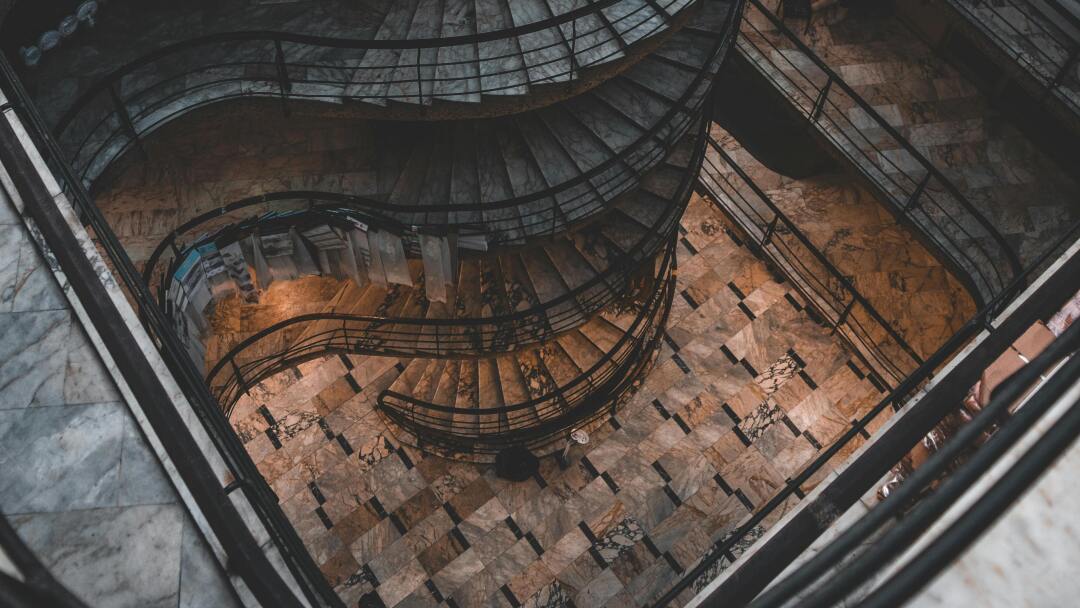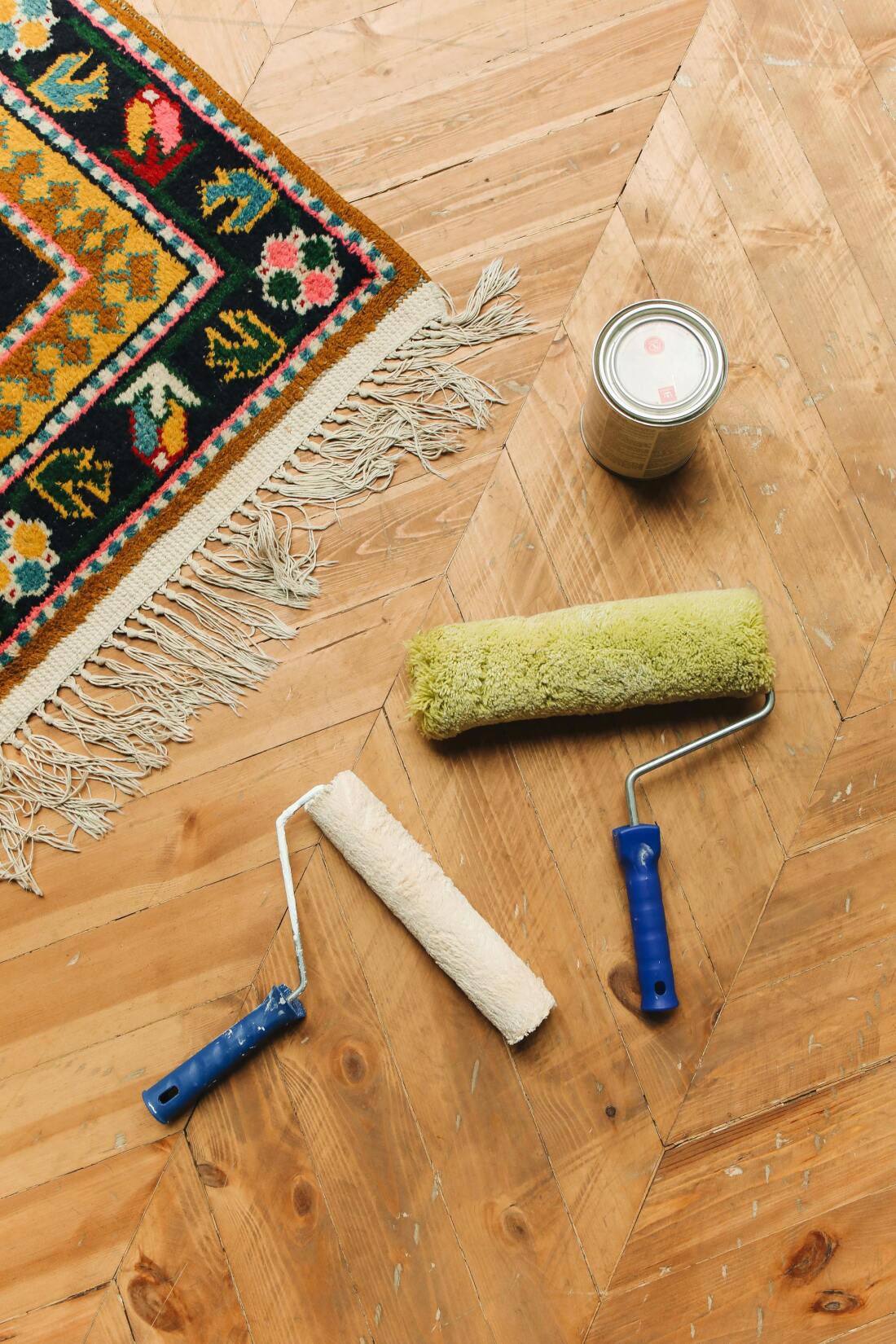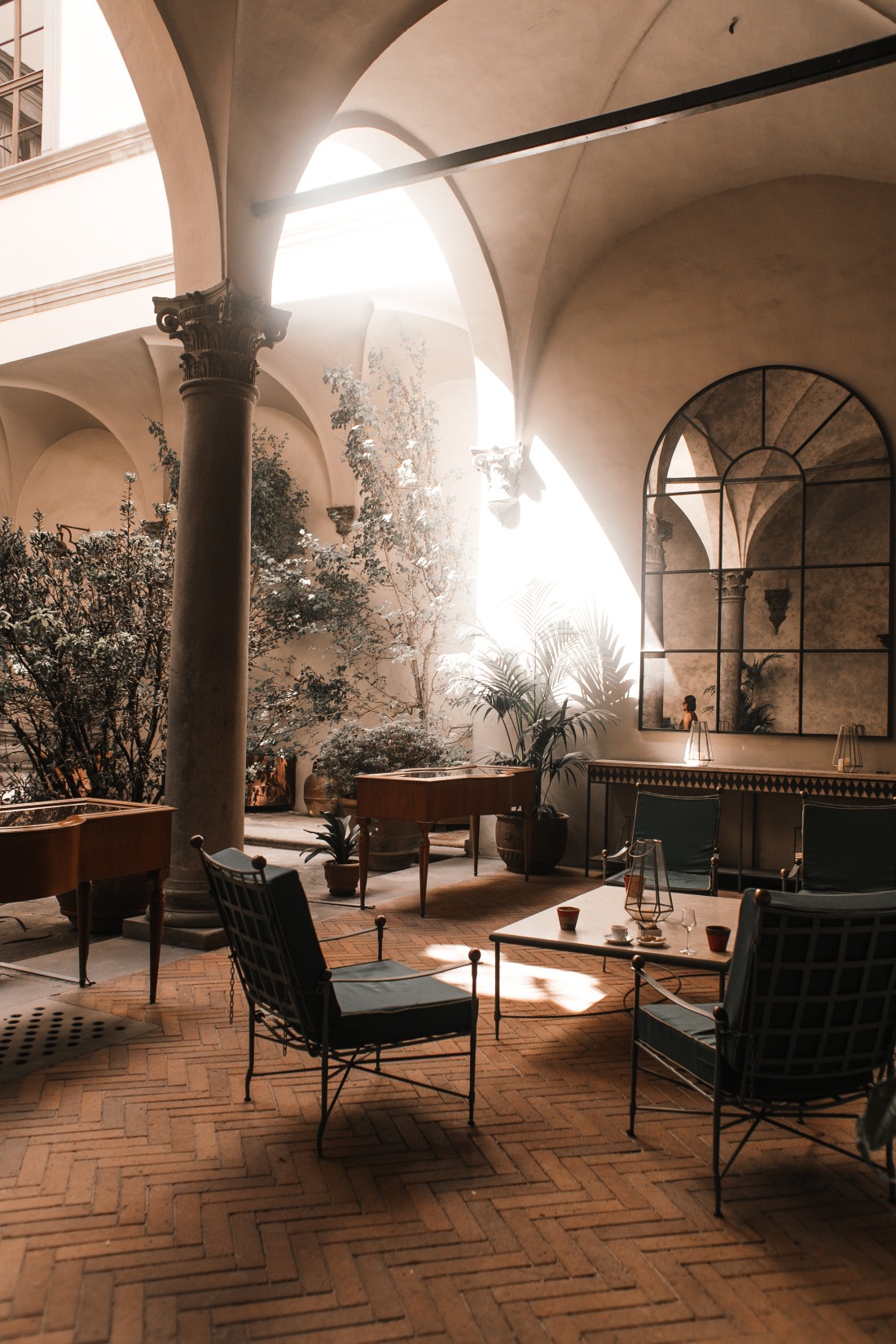
Are Herringbone Floors in Style
January 24, 2024Herringbone wood floors are a timeless classic that can add a touch of sophistication and elegance to any home. The unique V-shaped pattern is not only visually appealing, but it is also durable and easy to care for. If you are considering adding herringbone floors to your home, Easy Step Flooring is the perfect place to start. We offer a wide variety of herringbone flooring options to choose from, as well as expert installation services.
Definition of herringbone wood floors
Herringbone floors are a type of parquet flooring characterized by a distinctive geometric pattern that resembles the bones of a herring fish. This classic pattern can be traced back to the Roman Empire, where it was used in the construction of roads. Over time, herringbone floors became popular in homes and palaces throughout Europe, particularly during the Baroque and Renaissance periods.
These floors are typically made from hardwood, such as oak, walnut, or mahogany, although modern versions may also use engineered wood or laminate. The pattern is created by laying the planks or tiles at a 90-degree angle to each other, resulting in a zigzag design that adds visual interest to any room.
Herringbone wood floor has become increasingly popular in interior design due to its timeless and sophisticated look. It adds a sense of elegance and architectural detail to a modern space, making it a popular choice for both traditional and contemporary homes. Additionally, the pattern can visually expand a room, creating a sense of depth and movement. Its versatility in terms of materials and colors also makes it a popular choice for those looking to add a touch of luxury to their interiors.
Brief history of herringbone pattern
The herringbone pattern in flooring has a long and storied history, originating in 1539 in the Francois I Gallery at the Chateau de Fontainebleau. This timeless pattern gained popularity in traditional interiors due to its simple yet elegant design. The interlocking zigzag arrangement of the wood planks creates a visually appealing and classic look that has stood the test of time.
In modern interior trends, the herringbone pattern has made a resurgence, with many consumers expressing nostalgia for traditional materials and craftsmanship. The herringbone floor has become a bold statement piece, blending the elegance of the past with a modern-classic touch. The pattern's ability to add a sense of luxury and sophistication to a space has made it a popular choice for homeowners, decorators, and designers.
The herringbone pattern continues to be a symbol of timeless beauty and style, making it a popular choice for flooring in both traditional and modern interiors. Its origins may lie in the Renaissance era, but its continued evolution and relevance in contemporary design speak to its enduring appeal.

The Timeless Appeal of Herringbone Wood Flooring
Herringbone floors have stood the test of time and continue to be a timeless favorite among homeowners and designers. The distinct V-shaped pattern and classic appeal of herringbone floors never go out of style and can effortlessly enhance the aesthetic of any space. From traditional to modern interiors, the elegance and sophistication of herringbone floors make them a popular choice for those looking to add a touch of timeless charm to their homes. In this article, we will explore the enduring appeal of herringbone floors and why they remain a top choice for flooring options.
Origins in the 16th Century
In the 16th century, a significant development related to the topic was the Protestant Reformation, which was sparked by Martin Luther in 1517 when he nailed his 95 Theses to the door of the Wittenberg Castle Church. This event led to a widespread religious upheaval across Europe, challenging the authority of the Catholic Church and leading to the formation of various Protestant denominations.
Another key development was the Age of Exploration, with figures such as Christopher Columbus, Vasco da Gama, and Ferdinand Magellan leading expeditions that resulted in the discovery and colonization of new lands. This period saw the establishment of global trade routes, the exchange of goods and ideas between different cultures, and the beginning of the transatlantic slave trade.
The impact of these 16th-century developments was significant in shaping the future of the topic. The Protestant Reformation led to religious and political changes, including the rise of nation-states and the eventual separation of church and state. The Age of Exploration had far-reaching effects on the world, contributing to the globalization of trade, the exchange of crops and technologies between continents, and the spread of European influence worldwide.
Overall, the origins of these 16th-century developments had a profound impact on the shaping of the modern world, influencing religious, political, and economic structures that continue to resonate today.
Historical context of herringbone wood flooring
Herringbone flooring has a rich historical context, originating in France during the Renaissance period. The herringbone pattern was first used in wealthy stately homes and palaces, such as the Chateau de Fontainebleau, as a way to add a sense of grandeur and luxury to the interior. The intricate design became synonymous with elegance and sophistication, and its popularity spread throughout Europe, particularly in palaces and churches.
The herringbone pattern has been widely used for centuries in European palaces and churches, adding a touch of opulence to the floors of these magnificent buildings. The pattern was often created using different types of wood to create a striking visual effect.
In modern times, there has been a resurgence of herringbone flooring in interior design. It is now widely used in both traditional and contemporary homes, adding a timeless and classic touch to any space. The herringbone pattern has also made a comeback in commercial spaces, including restaurants, hotels, and office buildings, where it is appreciated for its elegance and versatility.
Overall, the herringbone pattern continues to be a timeless symbol of luxury and sophistication, with its historical roots in the opulent palaces and churches of Europe.
Role in interior design during that era
During the Victorian era, interior design played a pivotal role in representing social status and wealth. The opulent and ornate style of Victorian interior design emerged as a reflection of the prosperity and luxury of the time. Each element and detail within a Victorian interior served to showcase the homeowner's affluence and taste. From intricate wallpaper patterns to elaborate furniture pieces, Victorian interior design aimed to create an atmosphere of grandeur and elegance. This era was characterized by a mix of various design styles, including Gothic Revival, Renaissance Revival, and Orientalism, all of which contributed to the lavish and eclectic nature of Victorian interior design. The role of interior design during the Victorian era extended beyond mere aesthetic expression, as it also served as a means of displaying social standing and cultural refinement.
Enduring Popularity and Classic Charm
Herringbone flooring has maintained its enduring popularity and classic charm throughout the years, making it a timeless choice for interior design. Its distinctive pattern and rich history give it a sense of sophistication that seamlessly complements both historical and modern interior design themes.
The versatility of herringbone flooring allows it to enhance the visual appeal of both small and large spaces. In small rooms, the pattern creates the illusion of a larger area, while in larger spaces, it adds a sense of luxury and grandeur. Whether it's used in a traditional dining room, a contemporary living space, or a sleek kitchen, herringbone flooring makes a distinct style statement in any room.
Key features that make herringbone flooring a popular choice include its durability, timeless elegance, and ability to add warmth and character to any space. It can be incorporated into different areas of a home, such as entryways, hallways, kitchens, and bathrooms, to create a cohesive and stylish look throughout the entire property. With its timeless appeal and classic charm, herringbone flooring continues to be a beloved choice for homeowners and designers alike.

Why herringbone floors have stood the test of time
Herringbone floors have stood the test of time in interior design due to their historical significance and enduring appeal. Originating in the Roman Empire, herringbone patterns have been used for centuries in architecture and design, adding a sense of opulence and sophistication to homes.
Crafting herringbone floors requires meticulous attention to detail and skill. Each piece of wood is cut and laid at precise angles to create the distinctive herringbone pattern, a process that was once limited to skilled artisans and wealthy homeowners. This craftsmanship has added to the allure of herringbone floors, making them a symbol of luxury and timeless elegance.
Despite their long history, herringbone floors continue to exude a sense of historical significance and opulence in modern homes. The enduring appeal of herringbone floors lies in their ability to bring a touch of timeless sophistication to any interior design, making them a highly sought-after choice for homeowners looking to add a sense of history and luxury to their living spaces.
Factors contributing to their timeless elegance
Herringbone floors are known for their timeless elegance due to several key factors. The design elements, such as the intricate pattern of the wood planks arranged in a zigzag formation, create a sense of sophistication and visual interest. The material characteristics, typically high-quality hardwood like oak or walnut, add durability and a luxurious touch to any space.
Historically, herringbone floors have been favored in grand European estates and palaces, adding to their air of opulence and timelessness. These elements have ensured the lasting appeal of herringbone floors in interior design, as they effortlessly complement a range of design styles, from traditional to modern.
Notable examples of herringbone floors that have stood the test of time include the Palace of Versailles in France and the Grand Central Terminal in New York City. These iconic spaces continue to showcase the timeless beauty of herringbone floors and inspire homeowners and designers alike to incorporate this classic flooring choice into their own interiors.
Understanding Herringbone Floors
If you love the timeless appeal of hardwood floors and are looking to add a touch of sophistication to your space, then herringbone floors may be just what you're looking for. This classic pattern has been used for centuries and continues to be a popular choice for interior design. From its distinctive appearance to its versatile application, understanding herringbone floors can help you decide if it's the right choice for your home or business. Whether you're considering herringbone floors for a traditional, contemporary, or even a rustic look, learning more about this style of flooring can help you make an informed decision.
Exploring the Herringbone Pattern
The herringbone pattern is known for creating a sense of movement and space in a room. This is achieved through the way the pattern's alternating zigzag rows visually draw the eye, giving the impression of forward motion. This layout also helps to make the room feel larger and more dynamic. Historically, the herringbone pattern has been used in various architectural and design applications, with ancient Roman and Egyptian civilizations incorporating it into their structures. In modern times, there has been a resurgence in the use of the herringbone pattern in interior design, as it adds a contemporary yet timeless touch to spaces.
Herringbone flooring can be created using a variety of materials such as wood, tile, or vinyl. The installation process for herringbone flooring can be more complex compared to traditional patterns, as precision is crucial. Customizing the flooring can be achieved by choosing different materials, colors, or sizes for the individual pieces, creating a unique look that complements the overall design aesthetic of the room. This versatility allows for endless possibilities in creating a distinct and personalized herringbone floor.
Description and visual representation of the herringbone pattern
The herringbone pattern is a classic and timeless design that has been used for centuries in various textiles, flooring, and interior design elements. Dating back to ancient Rome, the pattern was originally used in masonry to create strong and stable structures. Over time, it has evolved into a popular choice for hardwood floors, tile, and even fabrics, thanks to its sophisticated and visually appealing look.
In modern interior design, the herringbone pattern has seen a resurgence in popularity, thanks to its versatility and ability to complement a wide range of design styles. Whether used in a traditional, rustic, or contemporary space, the herringbone pattern adds a touch of elegance and visual interest.
Visual representations of the herringbone pattern can be seen in various design elements, from wood flooring to ceramic tiles to textiles like throw pillows and upholstery. Its intricate and geometric design instantly elevates any space, making it a popular choice for both residential and commercial interiors.
The herringbone pattern's historic roots and timeless elegance make it a beloved choice for modern interior design, showcasing its ability to stand the test of time.
Comparison with other popular parquet patterns
When it comes to parquet patterns, there are a few popular designs that are commonly used to create stunning and unique flooring. In this section, we will compare some of the most popular parquet patterns with each other, discussing their differences in style, complexity, and overall aesthetic appeal. By exploring the distinct characteristics of each pattern, you'll be better equipped to choose the perfect parquet design for your home or project. Whether you're drawn to the classic herringbone, the timeless chevron, or the elegant basket weave, understanding the unique qualities of each pattern will help you make an informed decision that complements your personal style and interior design preferences. So, let's dive into a comparative analysis of these popular parquet patterns to discover their individual charm and appeal.
Types of Herringbone Flooring
There are three main types of installation for herringbone flooring: traditional tongue & groove, solid blocks, and Click Lok system.
Traditional tongue & groove herringbone flooring is available in a variety of species such as oak, walnut, and cherry, with finishes including natural, stained, and distressed. It comes in various colors like light, medium, and dark, and sizes ranging from narrow to wide planks.
Solid block herringbone flooring is often made from hardwoods like oak and maple, with options for unfinished or pre-finished surfaces. Colors and sizes can vary based on the specific species used.
Click Lok system herringbone flooring offers a range of species including bamboo, teak, and mahogany, with finishes like matte, gloss, and wire-brushed. This type of flooring comes in an array of colors and sizes to suit different preferences and space requirements.
In addition to traditional wood options, herringbone flooring is also available in laminate and vinyl materials. These alternatives provide a wider variety of colors and finishes, as well as differing levels of durability and water resistance.
Whether homeowners prefer traditional, solid block, or Click Lok system herringbone flooring, there are also laminate and vinyl options available to suit their specific needs and preferences.
Different materials used for herringbone floors (e.g., wood, vinyl)
Herringbone floors are commonly made of materials such as wood and vinyl. Wood herringbone floors offer a classic and timeless look, with options such as oak, walnut, and bamboo providing a rich and natural touch to any space. On the other hand, vinyl herringbone floors have become popular for their durability and cost-effectiveness, making them a practical choice for modern homes.
The classic style of herringbone pattern features a distinctive V-shaped design that has been used in traditional European architecture for centuries. However, there has been a modern resurgence in herringbone floors with wider plank options and new hues. This contemporary twist offers a fresh take on the classic pattern, allowing for more versatility in design and a bolder statement in any room.
In conclusion, herringbone floors can be made from a variety of materials, including wood and vinyl, each offering its own unique benefits. With the classic pattern experiencing a modern resurgence, homeowners now have a wider range of options to choose from when selecting herringbone floors for their spaces.
Transform Your Floors with Timeless Herringbone Charm: Easy Step Flooring Makes it Easy.
Craving a touch of timeless sophistication? Herringbone wood floors add instant charm and character to any room. At Easy Step Flooring, we make it easy to achieve this coveted look with our vast selection of high-quality hardwood options, expert installation, and competitive prices.
Discover the possibilities! Book a free consultation with our flooring specialists today and get a personalized quote for your dream herringbone floors.
Visit our showroom or schedule your free consultation online at Easy Step Flooring. Limited-time offers are available!





